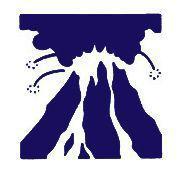SAS Urban Survival Handbook (113 page)
Read SAS Urban Survival Handbook Online
Authors: John Wiseman
Tags: #Health & Fitness, #Reference, #Survival, #Fiction, #Safety, #Self-Help, #Personal & Practical Guides, #General, #Survival Skills

During the earthquake
Stay where you are. Take cover against an inside wall or strong internal doorway. Avoid exterior walls, doors, heavy furniture or appliances. Do NOT rush outside—you may be injured by falling glass or masonry.
- ◑ If you are outside, get into the open away from power lines, buildings and lampposts.
- ◑ If you are in a crowded public place, do NOT make a dash for the exit—everyone else will have the same idea. Take cover, away from the risk of falling objects/debris.
- ◑ If you’re in a tall building, such as an office block, get under a heavy desk away from exterior walls and windows. Do NOT use stairs or lifts in an attempt to get to lower floors—most people are injured when moving around.
- ◑ Extinguish candles and naked flames in case of fire or gas explosion. If you smell gas, DON’T smoke.
- ◑ Do NOT take refuge in cellars, subways or underground tunnels. Exits could cave in or become blocked.
- ◑ If you’re driving, STOP. Do NOT get out—your vehicle will offer some protection. Crouch below seat level if possible. Do NOT stop on bridges, near buildings, or under trees, electrical power lines or large signs in case they collapse.
- ◑ Aftershocks have been known to occur anything from one minute to a year later! Most happen 24-48 hours after the main tremor and cause further damage to already weakened structures. Wait until you get the all-clear from police or rescue teams before leaving safety.
After the earthquake
Check for injuries. Apply first aid if necessary or wait for help. Leave severely damaged buildings in case of further collapse. Only return when authorities deem it safe to do so.
- ◑ Wear sturdy shoes to prevent injury from fallen masonry and glass.
- ◑ Clean up spilled household chemicals and potentiallyharmful substances.
- ◑ Gas leaks and damaged electrical wiring are major fire hazards. Shut off at the mains if damage is suspected and do not turn back on until checked by specialists.
- ◑ Do NOT smoke or operate electrical appliances if a gas leak is suspected—even a telephone could create a spark sufficient to cause an explosion.
TSUNAMI
 Often more devastating than an earthquake itself is the tsunami (pronounced soo-name-ee) or ‘tidal’ wave which can follow as a result of underwater disturbance. More than 200 tsunamis have
Often more devastating than an earthquake itself is the tsunami (pronounced soo-name-ee) or ‘tidal’ wave which can follow as a result of underwater disturbance. More than 200 tsunamis have
been reported in the Pacific in this century alone, some of which have resulted in waves more than 30 m (100 ft) high smashing into the coast with enormous destructive power. Earthquakes don’t always cause tsunamis, but they may also be generated by underwater landslides and major volcanic eruptions.Tsunamis are capable of travelling enormous distances. Although they move quickly, there is usually time for adequate warning. A tsunami generated on the coast of Chile, for example, would take about ten hours to reach Hawaii.
A major problem associated with a tsunami warning is that people allow their curiosity to overcome their common sense. When Berkeley, California received a warning during the Alaskan earthquake of 1964, the Chief of Police later complained that not only did local people go to the shoreline to watch for the great wave, so did some of his staff!
It’s VITAL to understand that a tsunami is not usually ONE wave but a series. People can be fooled into returning to the danger area after the first wave, only to meet their deaths under the onslaught of a second or third. At Crescent City, California, during the same Alaskan earthquake, seven people went back to a pub in the flooded area to collect their valuables after the first and second waves had passed. Assuming the danger was over, they stayed for a drink and were hit by a third wave. Five of them were drowned.
- ◑ If you can see that water pipes are damaged, shut off the supply. Check with local emergency officials whether sewage pipes are intact before flushing toilets. Plug bath and sink drainholes to prevent sewage back-up.
- ◑ Weakened chimneys can topple during an aftershock—approach with caution. Do not use a damaged chimney. A major fire could start.
- ◑ Beware of items falling out when you open cupboard doors.
- ◑ Do not use the telephone except in an absolute emergency. You could tie up much-needed lines for the rescue services.
- ◑ Check food and water supplies. Take great care over hygiene and sanitation.
- ◑ Do NOT use your car except in an emergency—roads may be impassable. Keep streets clear for rescue vehicles.
- ◑ Do NOT go out sightseeing. Apart from the danger to yourself, you could hinder rescue efforts.
- ◑ Listen for up-to-date emergency information on your portable radio.
Earthquakes can cause mudslides and landslides which may necessitate evacuation in your area. People living in coastal areas should be particularly aware of the possibility of tsunamis (sometimes called, incorrectly, ‘tidal’ waves). When a warning is issued, stay away from the shoreline and prepare for evacuation. Do not attempt to save possessions when your family, friends or other people are in danger.
REMEMBER
It is essential to stay as quiet as possible if rescuers are searching rubble for survivors. They need to be able to hear even the faintest cries for help. Unless you are told to evacuate, you should help search the immediate area—but only when you KNOW it’s safe to go outside.
VOLCANO
 When the volcanic island of Krakatoa in Indonesia suddenly exploded in 1883 the blast was so violent that the sound could be heard 3000 miles away across the Indian Ocean. Clouds of ash and dust were ejected into the atmosphere with such force that it took almost two years for it all to fall back to earth.
When the volcanic island of Krakatoa in Indonesia suddenly exploded in 1883 the blast was so violent that the sound could be heard 3000 miles away across the Indian Ocean. Clouds of ash and dust were ejected into the atmosphere with such force that it took almost two years for it all to fall back to earth.
Altogether there are 1343 known active volcanoes around the world, Indonesia boasting the highest number—200. There is also a high concentration around the Pacific, though Europe has a few such as Mount Etna in Sicily, Vesuvius in Italy and Hekla in Iceland.
Volcanic eruptions of the earth’s interior core matter, usually where the crust is deeply fissured, can cause fierce explosions of lava, gases, dust and rock—particularly in a ‘central’ volcano, which has the recognizable cone. Why a volcano should decide to erupt, perhaps after hundreds of years of apparent dormancy, is usually linked to viscous lava clogging up the cone of the volcano and causing a massive pressure build-up.
There are also instances where local earthquakes have triggered off a volcanic eruption—a bit like shaking up a bottle of fizzy drink. Such was the case in the eruption of Mount Saint Helens, Washington, in 1980, where 65 people were killed—including a professional volcanologist!
Given the cataclysmic nature of an erupting volcano, and the speed at which molten lava can travel, you would be forgiven for thinking that survival would be in the lap of the gods. However there are usually visible warning signs weeks before an euption and, even if prior evacuation has not been possible, there are emergency precautions you can take.
Advance warnings
A volcano may ‘grumble’ on and off for years, letting everyone know that they can expect an eruption sooner or later. On the other hand, the eruption may take place in a few hours or days. DON’T take chances! DON’T climb a volcano for a closer look. Pay attention to:
- ◑ Audible rumblings from the volcano or the ground
- ◑ Ash and gases appearing from the cone, the sides or round the volcano
- ◑ Earth movement, whether faint tremors or earthquakes
- ◑ Presence of pumice dust in the air
- ◑ Acid rain fall
- ◑ Steam in clouds over the mouth of the volcano
- ◑ Rotten egg smell near rivers, betraying presence of sulphur
Emergency procedure
- ◑ Leave the area immediately. Do NOT waste time trying to save possessions.
- ◑ Be prepared for difficult travelling conditions. If vehicles get bogged in deep ash you may have no choice but to abandon them, in which case run for the nearest road out of the area. You may be able to hitch a lift.
- ◑ Avoid areas downwind from the volcano if ash is being expelled. Use a scarf or wet handkerchief as a mask—the combination of ash and acidic gas can cause lung damage.
- ◑ Protect eyes with any snug-fitting goggles.
- ◑ Beware flying debris—any hat stuffed with newspaper might help prevent head injury. Wear thick padded clothing for body protection.
- ◑ Always check for mudflows when approaching a stream channel. A mudflow can move faster than anyone can run—even buildings may not stop one.
- ◑ Shelter in buildings (other than emergency refuges) ONLY as a last resort. Walls can be crushed by rocks and lava. Roofs are subject to collapse, even from just the weight of ash and debris.
NUEE ARDENTE
A nuée ardente is the scientific name for a rapidly-moving, incandescent cloud of gas, ash and rock fragments accompanying a volcanic eruption. Faced with a red hot cloud travelling at more than 160 kph ( 100 mph), you only have two choices. Either shelter in an underground emergency refuge or hold your breath and submerge yourself underwater—in a river, a lake, the sea. The danger may pass in 30 seconds or so.
HURRICANE
 A hurricane is a severe tropical storm capable of releasing as much energy in one day as a one megaton hydrogen bomb. Also known as
A hurricane is a severe tropical storm capable of releasing as much energy in one day as a one megaton hydrogen bomb. Also known as
a cyclone (literally ‘coil of the snake’) or typhoon, a hurricane can travel up to 300 kmph (about 200 mph)—bringing with it storm surges, flash flooding and tornadoes and leaving a phenomenal trail of destruction in its wake.
Hurricanes have caused more damage in the United States than any other type of natural disaster. As many as 50 countries with a total of 500 million population are exposed to the risk every year.
True hurricanes never form in cooler European waters. From June through to November, the US, Hawaiian islands and Caribbean are at their most vulnerable. In the steamy tropics the general weather conditions are favourable to hurricanes virtually every day.
MEASURING HURRICANES
International classification of hurricanes is usually based on wind speeds measured over one, three or five minutes or in single gusts. Wind speeds are often expressed on the Beaufort Scale, although in the US the common classification is simply:
1 Tropical storm
2 Severe tropical storm
3 Hurricane
STRONG GALE
Wind speed:
75-88 kph (46-55 mph)
Beaufort scale:
9
Likely effects:
Leaves and small branches stripped off trees. Structural damage to buildings unlikely.
